Media
HKU scientists reveal how material viscosity modulates living cells behavior and functioning - A significant breakthrough in tissue engineering for cultivating human tissues and organs
08 Nov 2018
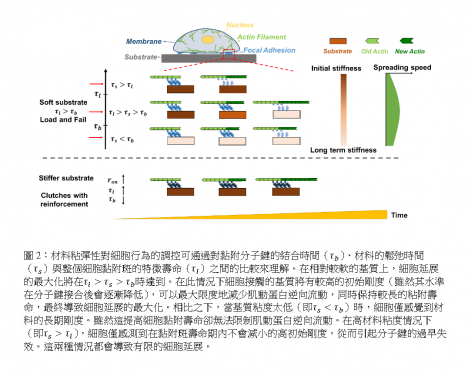
Fig. 2. Schematic illustrates effects of material viscoelasticity on cellular behavior based on the comparison of the clutch binding timescale, substrate relaxation timescale and adhesion lifetime scale.
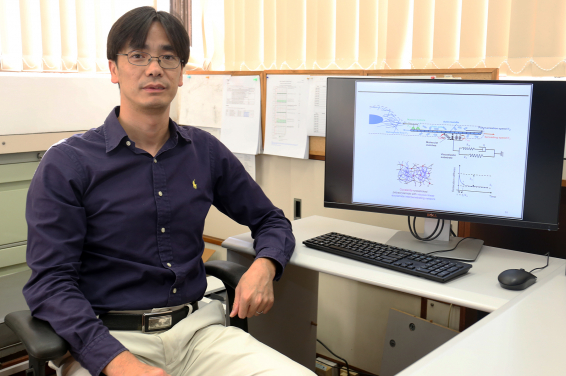
Dr Lin Yuan and his international collaborators are the first team worldwide to reveal the mechanism by which surrounding viscoelasticity affects cell response across a wide range of material parameters.
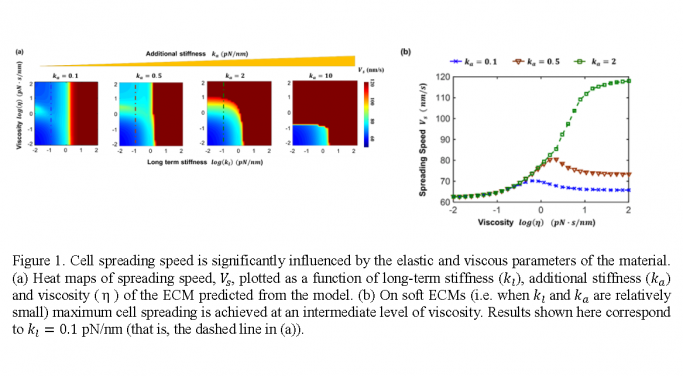
Fig. 1. Cell spreading speed is significantly influenced by the elastic and viscous parameters of the material.
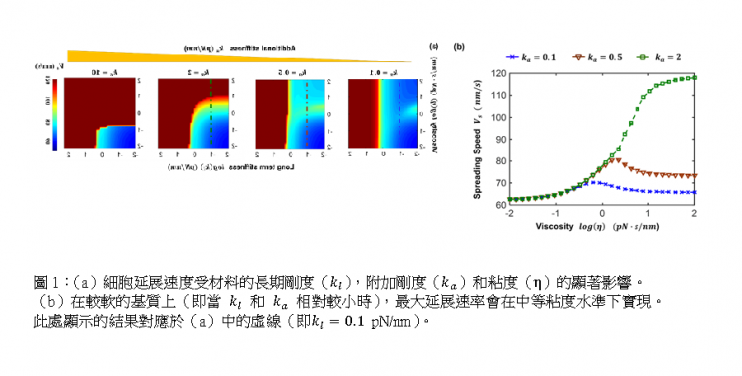
Fig. 1. Cell spreading speed is significantly influenced by the elastic and viscous parameters of the material.
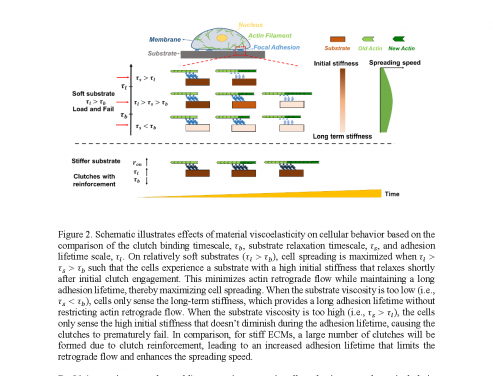
Fig. 2. Schematic illustrates effects of material viscoelasticity on cellular behavior based on the comparison of the clutch binding timescale, substrate relaxation timescale and adhesion lifetime scale.
- 1 / 5
- 2 / 5
- 3 / 5
- 4 / 5
- 5 / 5
Dr Lin Yuan and his student Dr Gong Ze from the Department of Mechanical Engineering at the University of Hong Kong (HKU), in collaboration with researchers from University of Pennsylvania, University of Virginia and Stanford University, have made a significant breakthrough in the area of cell mechanics which marks a major step in furthering scientists’ fundamental understanding of how cells perform their biological duties in vivo.
Dr Lin and his international collaborators are the first team worldwide to reveal the mechanism by which surrounding viscoelasticity affects cell response across a wide range of material parameters. The findings were published in the prestigious international academic journal Proceedings of the National Academy of Sciences of the United States of America (PNAS) .
"Regenerative Medicine" or "Tissue Engineering" studies use living cells to grow adult tissues, such as skin, blood vessels, joints, or major organs such as the heart, to be used for transplantation or repair. A key to cultivating living cells is to provide the cells with proper extracellular matrix (ECM) close to the natural body environment suitable for their growth and functioning.
Most existing studies in this area focus on issues like how the chemical composition, surface coating, porosity or stiffness of the extracellular matrix directs the cell behavior. In reality, besides elasticity, natural and most synthesised ECMs also exhibit considerable viscosity. However, the role of material viscosity in regulating the behavior of cells remains largely unknown to scientists.
The team used combined theoretical and experimental approaches to demonstrate that viscous dissipation in ECM can be as important as elasticity in directing cell response. Specifically, the research team developed a stochastic model to examine the dynamics of motor clutches formed between the cell and a viscoelastic substrate as well as its implications in the spreading of cells.
Findings revealed that on soft ECMs, maximum cell spreading is achieved at an optimal level of viscosity (Figure 1) in which the material relaxation time falls between the timescale for clutch binding and its characteristic binding lifetime. That is, viscosity serves to stiffen soft substrates on a timescale faster than the clutch off-rate, which enhances cell−ECM adhesion and cell spreading. On the other hand, for substrates that are stiff, the model predicts that viscosity will not influence cell spreading as the bound clutches are saturated by the elevated stiffness, see Figure 2. The model was tested and validated on three different (i.e. hydrogel, polyacrylamide- and hyaluronic acid-based) material systems synthesized by the research team and well-explained the different observed effects of viscosity on each substrate.
Dr. Lin’s team is among the world’s most active groups in cell mechanics research, particularly in elucidating the physical mechanisms behind important cellular processes such as cell adhesion, cell migration and mechanotransduction, as well as exploring their possible applications in disease detection and tissue engineering. To achieve these goals, they have been using theoretical modeling and large-scale simulation in conjunction with experimental tools like cutting-edge micro-/nano- fabrication and characterisation techniques. One of their earlier work, in collaborating with the same group of researchers from University of Pennsylvania, on the role of ECM plasticity in focal adhesion dynamics of cells was published in the June 2017 edition of PNAS.
Dr Lin and collaborators' article in PNAS: https://doi.org/10.1073/pnas.1716620115.
For media enquiries, please contact Ms Melanie Wan, Communications and Public Affairs Office, HKU, tel: 2859 2600 / email: melwkwan@hku.hk; or Ms Bonnie Tsang, Faculty of Engineering, HKU, tel: 3917 1924 / email: bonniepy@hku.hk .
